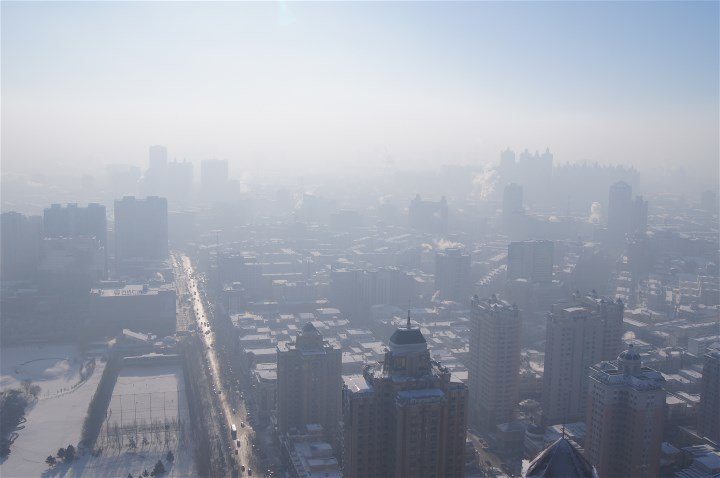Environment
U.S., China Clear the Air With Historic Agreement

This month the U.S. and China reached an historic and unexpected agreement on climate change. As a follow-up, China announced that it will cap its coal consumption by 2020. The U.S. and China are the largest emitters of greenhouse gases in the world, and the world’s largest economies. What does this mean for us?
Climate change isn’t something that we can wait 50 or 100 years to deal with – it is happening right now. The U.S. is seeing more severe weather, unprecedented sea level rise, loss of habitat and expanding ranges of pests and diseases.
The primary driver of climate change is the carbon that humans put into the atmosphere and the biggest producers of carbon are coal-fired power plants that generate electricity. China is now the world’s largest user of coal.
In the climate change agreement, China promised to reach its peak emission of carbon and other greenhouse gases, and to increase its reliance on non-fossil fuels to 20 percent of its total energy use, by 2030. The U.S. pledged to reduce its emissions in 2025 by 26 to 28 percent, to below 2005 levels.
From the U.S. perspective, President Obama’s pledge is do-able with the legal and policy tools we have – unless the new Congress takes them away. We are already on a path to reduce our carbon emissions by 17 percent below 2005 levels by 2020. We can make the additional reductions by using the Obama administration’s proposed new power plant rules and implementing new emission standards for methane gas. Emitted by landfills and in agricultural, oil and gas operations, methane is a more potent greenhouse gas than carbon. The planned reductions will make our transportation system less carbon-intensive (and increase fleet mileage requirements), reduce the energy used by our buildings and appliances, while increasing our use of renewable resources for electricity generation.
China’s leadership does not need to deal with a contentious Congress but there can still be opposition to new policies – from, for example, state-run electricity and energy companies. Since the Chinese leadership is committed to continued strong economic growth (the country’s gross domestic product has increased 40-fold from 1980 to 2010), this means plenty of energy will remain available. Even so, the Chinese leadership gets it that China needs to reduce its world-famous extreme levels of pollution (I’ve experienced these myself), and needs to reduce its greenhouse gas emissions to protect its own citizens and economy from drastic climate change.
In fact, China is now the leading producer of renewable energy and also leads in investment in clean energy resources; in 2013, China invested more in non-fossil fuel capacity than in fossil fuel capacity. Its coal use is falling, not increasing, as of 2013. It has also pledged to cap emissions in 2015 from the steel and cement industries, which are responsible for one-fifth of China’s carbon emissions. And Chinese government leaders know that the U.S. has dramatically improved its air quality since the Clean Air Act was enacted in 1970, while enjoying huge increases in gross domestic product.
A very positive side effect of the U.S.-China agreement is that it sends a strong signal to other countries – especially such large developing countries as India – to get on board. The next United Nations climate change conference is scheduled for 2015, in Paris, and organizers hope to produce an agreement on climate change that is binding on all U.N. members. The U.S.-China agreement is a strong indication that this is achievable.
(David Pettit is a Senior Attorney at the Natural Resources Defense Council working on air quality and climate change issues in the U.S. and China.)
Photo: Fredrik Rubensson

-

 Latest NewsDecember 8, 2025
Latest NewsDecember 8, 2025This L.A. Museum Is Standing Up to Trump’s Whitewashing, Vowing to ‘Scrub Nothing’
-

 Latest NewsDecember 10, 2025
Latest NewsDecember 10, 2025Capital & Main, L.A. Times Win Sidney Award for Reporting on Child Farmworkers
-

 StrandedDecember 9, 2025
StrandedDecember 9, 2025Giving Up on the Dream: Asylum Seekers Try Other Options in Mexico
-

 Locked OutDecember 16, 2025
Locked OutDecember 16, 2025This Big L.A. Landlord Turned Away People Seeking Section 8 Housing
-

 Column - California UncoveredDecember 12, 2025
Column - California UncoveredDecember 12, 2025They Power the U.S. Economy, But Will Struggle to Afford Health Care
-

 Column - State of InequalityDecember 11, 2025
Column - State of InequalityDecember 11, 2025A Little Place Called Home?
-

 The SlickDecember 19, 2025
The SlickDecember 19, 2025‘The Poor Are in a Very Bad State’: Climate Change Accelerates California’s Cost-of-Living Crisis
-

 Locked OutDecember 23, 2025
Locked OutDecember 23, 2025Section 8 Housing Assistance in Jeopardy From Proposed Cuts and Restrictions

